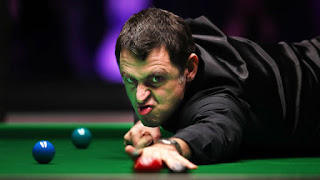Future Steps
Snooker is at the moment definitely in a good place. Unlike the dark cloud that was over the sport a few years ago when only a handful of tournaments existed, the sport has grown its coverage with a 20 tournament, season and expanded the game to the likes of Bulgaria, Brazil, China, Gibraltar and India.
Thanks to a great management structure under the leadership of Barry Hearn and Jason Ferguson, they have been able to tap into their past experience of the game and format/ develop events and locations for snooker to be played but at the same time attracting investors and sponsors to inject financial capital into the sport.
However like anything in life there is always room for improvement. On average it costs a player £20,000 just to play on the tour per season. This jaw dropping amount is made up of entry fees and travel fees. For example, a lower ranking player could travel to China and complete in one of the five competitions that exist there and be beaten in the first round. They would earn them next to nothing in prize money and they would have to make the long journey home.This has to change, players need help with their costs and a format has to be created where a player doesn’t constantly travel as this where the theory of burnout was conceived.
To explain, burnout is when a player’s game, form and performance suffers as a result of constant travelling. This is why you see so many shock exits of too 16 players in the early rounds of tournaments. The likes of Higgins, Robertson, Trump and O’Sullivan have all fallen to this snooker sword.
Likewise, World Snooker does need to look at bringing back some of the old venues and formats that snooker had in the very successful period of the 1980’s The Hexagon, Reading, one such venue and the doubles competition being another. Jewels such as Pot Black could be brought back as it was a few years ago when played at the Royal Automobile Club in London.
Lastly, there needs to be massive investment in the women’s game, It is grossly unequal in terms of playing locations and prize money. The season isn’t televised and there is little promotion of the female game outside of snooker itself. Snooker is blooming but not yet fully thriving.
Thanks to a great management structure under the leadership of Barry Hearn and Jason Ferguson, they have been able to tap into their past experience of the game and format/ develop events and locations for snooker to be played but at the same time attracting investors and sponsors to inject financial capital into the sport.
However like anything in life there is always room for improvement. On average it costs a player £20,000 just to play on the tour per season. This jaw dropping amount is made up of entry fees and travel fees. For example, a lower ranking player could travel to China and complete in one of the five competitions that exist there and be beaten in the first round. They would earn them next to nothing in prize money and they would have to make the long journey home.This has to change, players need help with their costs and a format has to be created where a player doesn’t constantly travel as this where the theory of burnout was conceived.
To explain, burnout is when a player’s game, form and performance suffers as a result of constant travelling. This is why you see so many shock exits of too 16 players in the early rounds of tournaments. The likes of Higgins, Robertson, Trump and O’Sullivan have all fallen to this snooker sword.
Likewise, World Snooker does need to look at bringing back some of the old venues and formats that snooker had in the very successful period of the 1980’s The Hexagon, Reading, one such venue and the doubles competition being another. Jewels such as Pot Black could be brought back as it was a few years ago when played at the Royal Automobile Club in London.
Lastly, there needs to be massive investment in the women’s game, It is grossly unequal in terms of playing locations and prize money. The season isn’t televised and there is little promotion of the female game outside of snooker itself. Snooker is blooming but not yet fully thriving.




Comments
Post a Comment